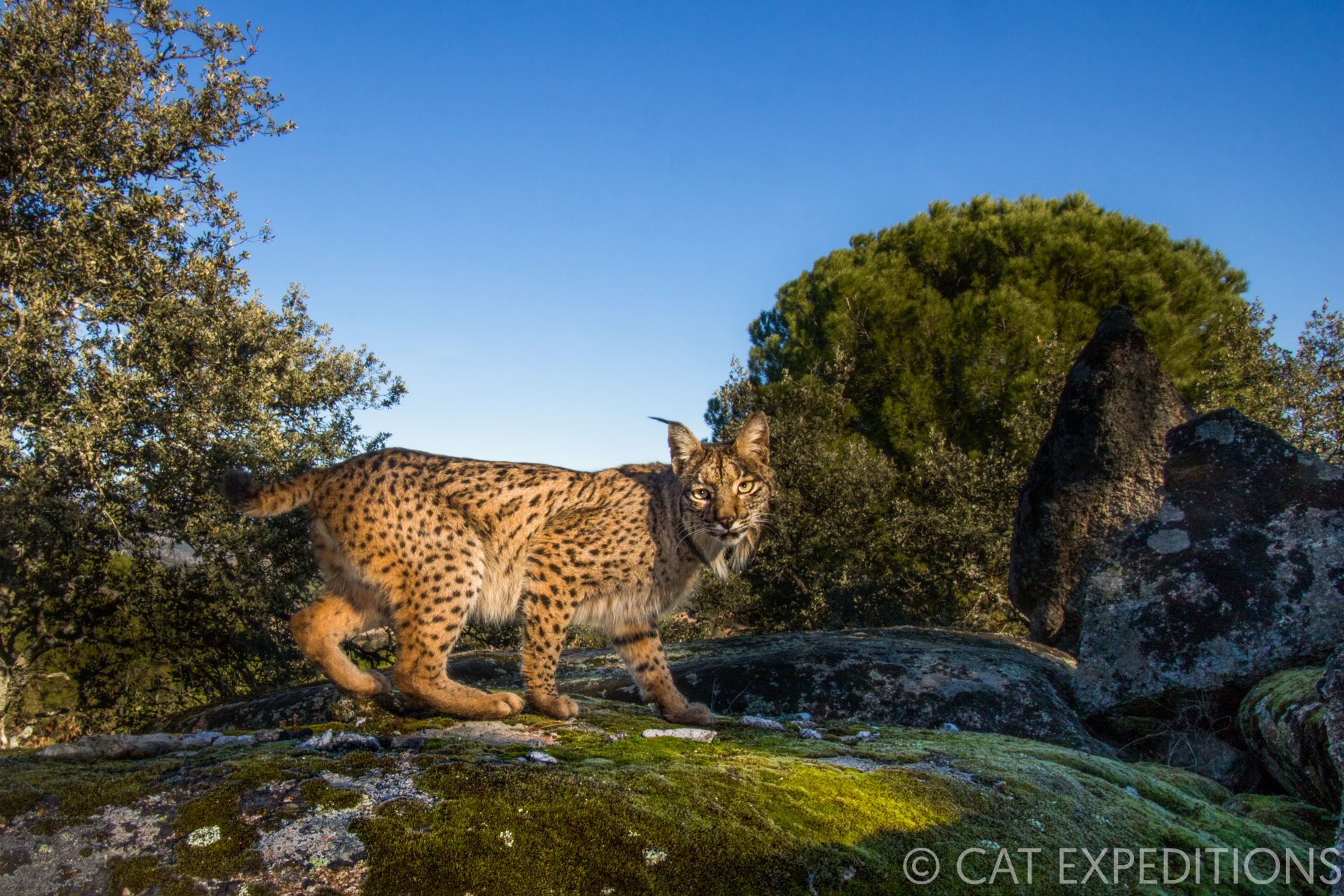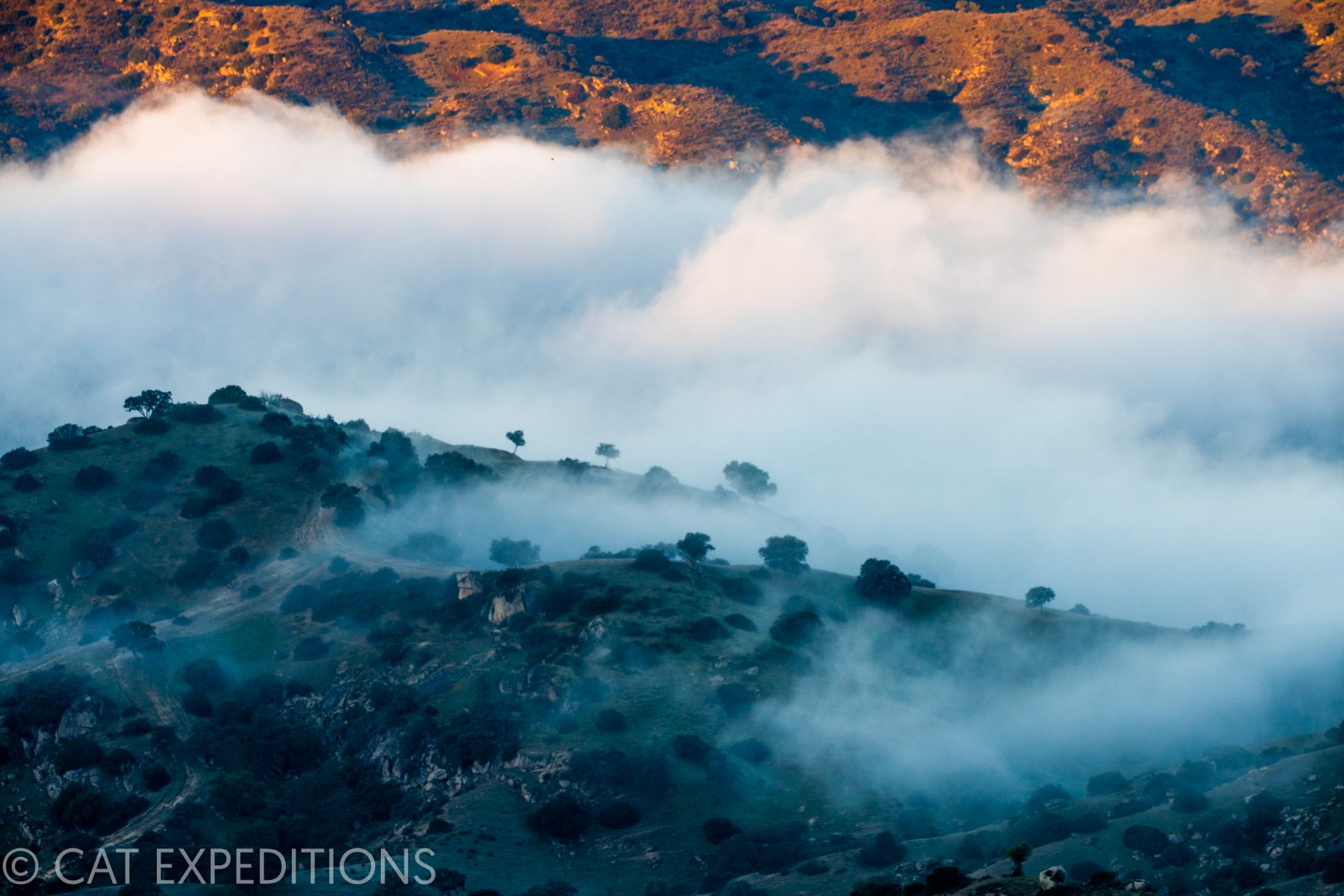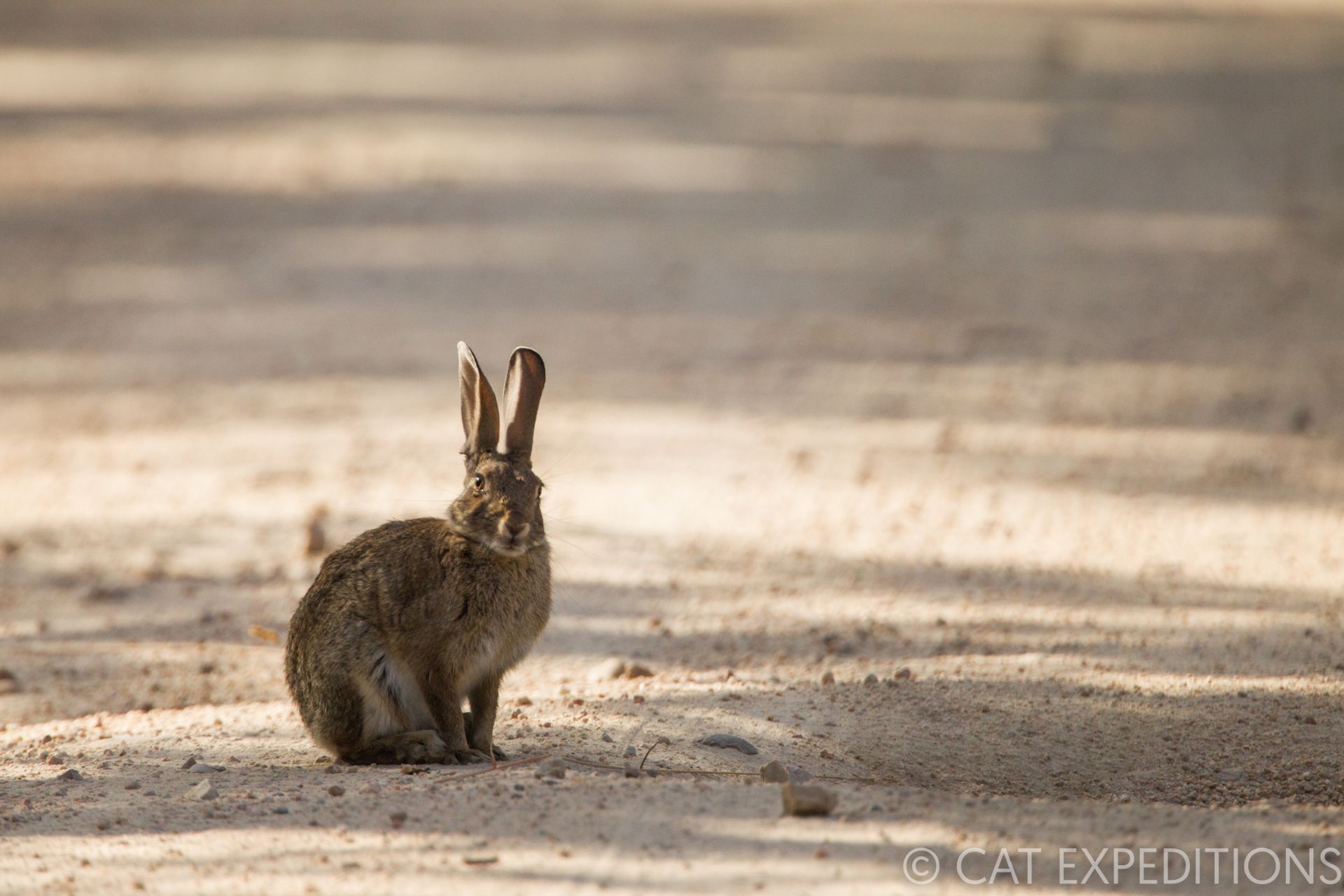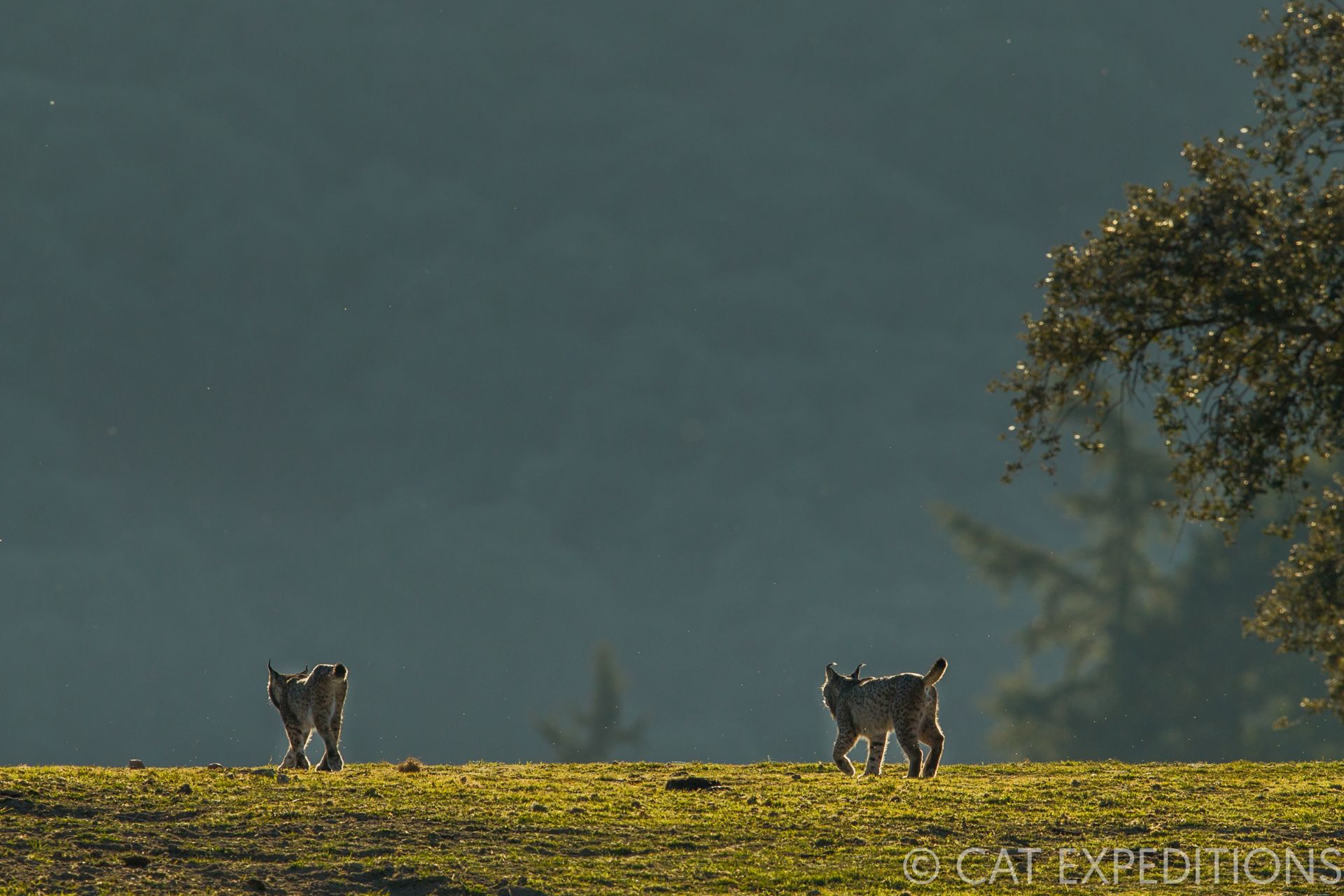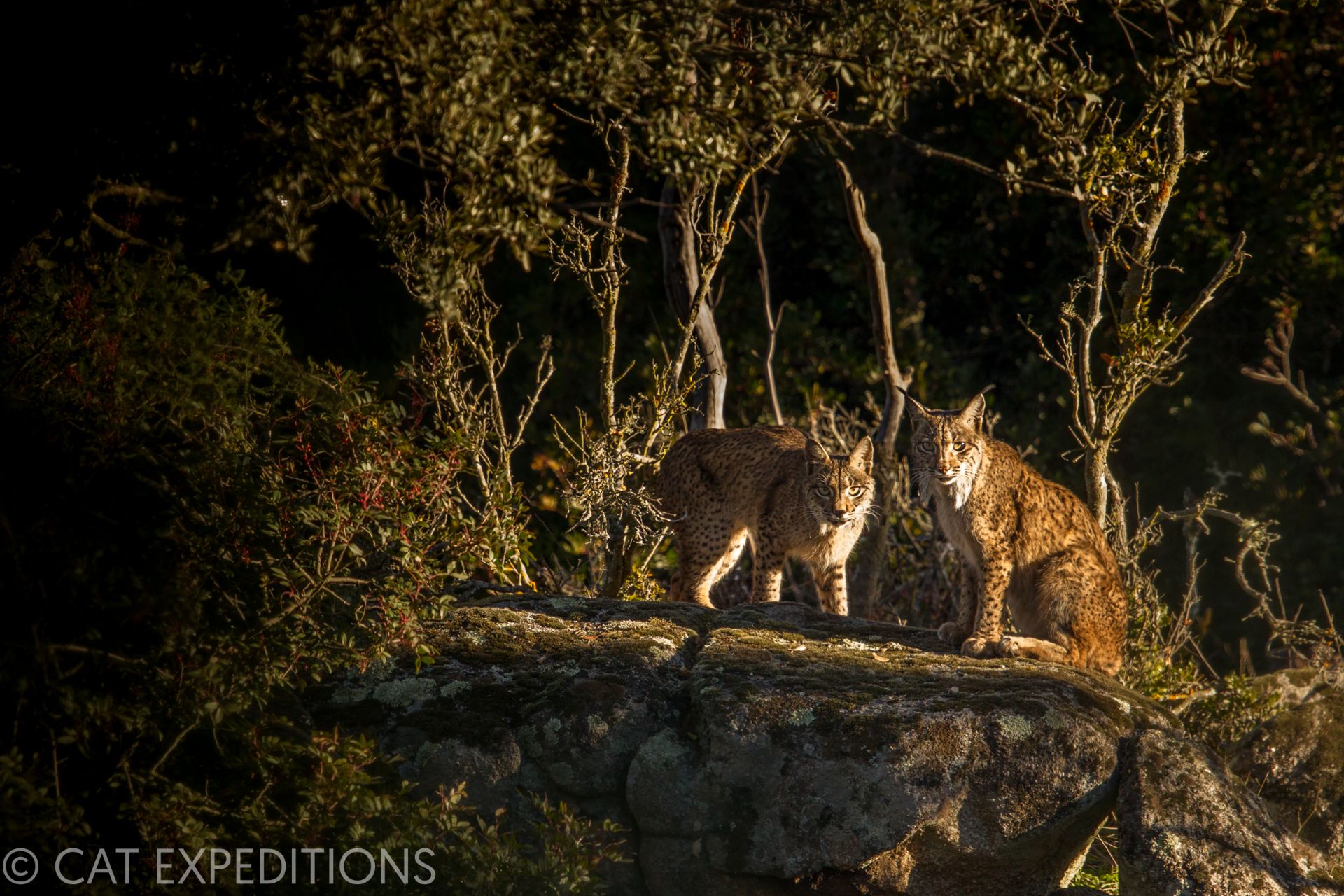Iberian Lynx
IBERIAN LYNX (Lynx pardinus)
The Iberian lynx is the world’s most endangered species of wild cat. In the late 1990’s, there were less than one hundred lynx left. After that, a massive effort was made to conserve the lynx and today, there are over eight hundred lynx living in the wilds of Spain and Portugal. These cats are rabbit specialists, with over ninety percent of their diet being composed of rabbits.
Difficulty: Difficult
Iberian Lynx Tour Statistics
4 IBERIAN
LYNX TOUR RUN
3.6 AVG NUMBER OF
IBERIAN LYNX SEEN PER TOUR
WITH EACH CAT
Iberian Lynx Description
The Spanish lynx is a medium sized cat, with the characteristic short lynx tail and tasseled ears. It is about three times the size of a domestic cat. Its most distinguishing feature is its prominent beard, which grows longer with age. Females weigh up to 10kg (22 lbs) and males up to 16kg (35lbs). It is generally considered the most heavily spotted lynx species but there is dramatic variation in spotting. In Andujar, where we run our Iberian Lynx Photo tour, the individuals are generally slightly to medium amounts spotted. The tail is completely black at its end.
A male lynx in southern Spain. This individual is a bit more spotted than most of the cats we see during our lynx tours.
Iberian Lynx Distribution and Habitat
Iberian lynx are endemic to Spain and Portugal, and are not found anywhere else in the world. The largest population of Spanish lynx is just north of Andalusia in southern Spain, where we lead our tour. This area is also called the Sierra Morena, an area of beautiful Mediterranean forest covered mountains. Within these mountains, lynx like to hang our near rocky outcroppings and where there is sufficient scrub to hide them. They also blend in miraculously well into the lichen covered rocks that litter the landscape.
Mediterranean forest in fog in the Sierra Morena mountains in southern Spain
Iberian Lynx Feeding Biology
Spanish lynx are probably one of the most specialized wild cats when it comes to their prey. The European rabbit makes up to 93% of their prey, and they cannot live in areas where rabbits are not found. An adult Spanish lynx needs to eat one rabbit about every other day to sustain itself, with females that have kittens needing to catch at least one rabbit every day. An additional prey item that the lynx will go after is the Red-legged Partridge. When we see either of these animals on the tour we get excited to know there is enough food around for the cats to eat.
Arguably nothing is more important to the survival of Spanish lynx than the European rabbit, without it the lynx will not survive.
Iberian Lynx Social Organization
Spanish lynx are solitary and territorial. Male territories are larger than those of females and try to encompass as many female territories as possible. Both male and female territories have core areas that the cats use extensively with the outer edges of their territories often overlapping those of other individuals. Territorial fights between individuals do occur, often when a dispersing animal is looking for its own territory and stumbles into a resident cat. Females will often share their territory with their daughters and will even share kills with them. During our tours it is sometimes possible to see mating pairs of lynx.
A male Spanish lynx follows a female during breeding season, which is also the time we will be there for our tour
Iberian Lynx Reproduction
Iberian lynx mating season is from December through early January, which is why we run our tours in January (sometimes we even get to hear their mating calls!). Two to four Iberian lynx kittens are born in March and April. These adorable little cats become independent of their mom at around seven to eight months. At this time however, they tend to still stick around their mother's territory, not searching for their own until independent home until they are at least one year old, and sometimes not even until they are two years of age. Spanish lynx can live up to thirteen years in the wild.
A spanish lynx mother with her almost fully grown kitten. after another few months this juvenile would have left her mother’s territory.

